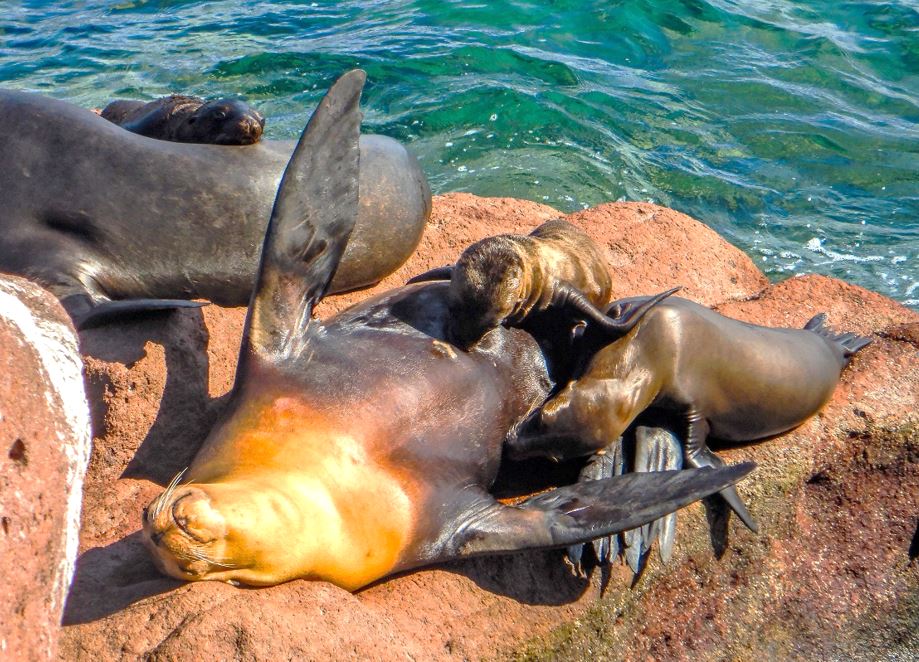
California sea lion whiskers show that it all depends on where they live and what is available for them to eat when weaned.
The age at which sea lions wean can vary significantly between years and among populations. It is an important life-history parameter that is influenced by environmental conditions and can drive changes in sea lion numbers. However, knowing when weaning begins and ends is difficult to determine. We developed a method (using Fourier analysis) to identify the lactation period from changes in the δ15N profiles of vibrissae from juvenile California sea lions—born in three colonies in Mexico. We sectioned vibrissae from 15 juvenile California sea lions (aged approximately 12 months) into 33–74 segments of similar weight. We measured δ15N and δ13C for each vibrissa segment and assigned dates to each one using site-specific vibrissa growth rates. We also compared the δ15N profiles that corresponded to the pup stage on the juvenile vibrissae with δ15N values of adult female vibrissae from the same colonies to validate the dietary transition from milk to fish identified by the Fourier analysis. We found that pups began supplementing their milk diet with fish at different times between colonies—ranging from 3 to 5 months old (San Esteban Island), 5–7 months old (Santa Margarita Island), and > 12 months old (Los Islotes Island). All pups were > 1 year old when weaned. The longer lactation period in Mexico contrasts with the shorter 10–11 months age at weaning recorded at northern colonies of California sea lions along the US Pacific coast (San Miguel Island). The difference in lactation duration among regions likely reflects latitudinal differences in marine productivity, and a lower nutrition quality of prey available to California sea lions in Mexico. Our study augments the limited knowledge of weaning in California sea lions and provides a means to determine weaning in other species.
 Publication
Publication
2024 | ||||||||||||||
|

|

|
||||||||||||
Paty Rosas-Hernandez undertook this research at the Centro Interdisciplinario de Ciencias Marinas in Baja California Sur, Mexico
